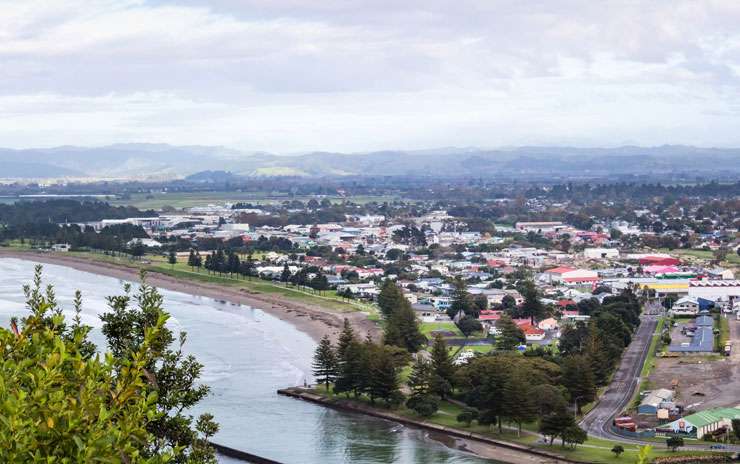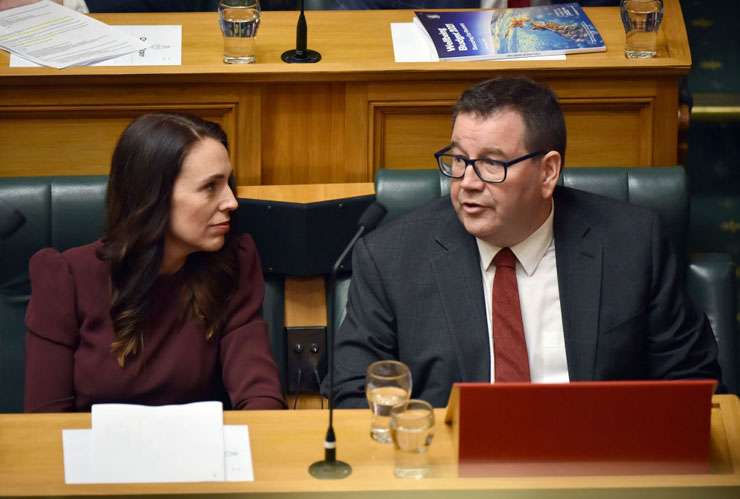It's now been a full 12 months since New Zealand's property market opened for business again after more than two months of Covid-19 restrictions brought the real estate industry to a standstill.
Back in May 2020, the future of the housing market was far from certain. Sales were happening and the crowds were back at the open homes, but the overall sentiment was that any surge in the market would be short-lived.
But a potent combination of record low interest rates and the removal of home loan restrictions, as well as travel restrictions curbing Kiwi spending, saw a rush of buyers enter the market and house prices grow at their fastest pace in years. This in turn led to a series of government and Reserve Bank measures aimed at slowing house price growth.
According to OneRoof’s latest snapshot of the housing market, New Zealand’s median property value — or typical house price — has jumped 25% in the last 12 months to $779,000, in effect adding $154,000 to the cost of buying a home.
Start your property search
The figures, from OneRoof and its data partner Valocity, show Manawatū-Whanganui is the country’s hottest property market, with the region’s median value rising 41% — or $158,000 — to $548,000.
Also feeling the heat are Gisborne (up 39% to $549,000), Marlborough (up 35% to $622,000), Hawke's Bay (up 34% to $681,000) and Greater Wellington (up 33% to $888,000).
The post-Covid boom has radically altered the shape of the housing market. New Zealand now has 20 suburbs where the median property value is $2m or above. That's up from four a year ago and 11 three months ago. And another 13 suburbs are likely to join them soon.
Whitford, in Auckland eastern fringes, has joined Herne Bay in the $3m club, with St Marys Bay and Coatesville, all in Auckland, and Oriental Bay in Wellington on their way to crossing the threshold.
A year ago, no suburb had a median value of $3m or more and Herne Bay, long the country’s most expensive place to buy a home, was half a million dollars away from becoming the first. Its median value is now $3.31m — up almost $800,000 this time last year.
The figures show that of the 871 New Zealand suburbs with 20 sales or more in the last year, 284 — or 32% — have median property values of $1m or above, up from 197 last quarter and 118 a year ago.
For many homeowners, this is a significant boost to their real estate fortunes. For those not on the property ladder, the goal of owning a house, even in a low interest rate environment, may seem further off than ever.

Gisborne property prices jumped 39% in the 12 months since the Covid lockdown was lifted. Photo / Getty Images
In Auckland, just 16% of the city's suburbs have median property values of less than $1m. That's down from 25% last quarter and 52% a year ago. In the year since lockdown ended, house prices in many Auckland suburbs have accelerated more than 40%.
The change can be seen in the other major metros:
• Wellington has just seven suburbs where the median property value is less than $1m, and just two — Te Aro and Wellington Central — where the median value is less than $900,000.
• Tauranga’s $1m club has grown from just one suburb a year ago to six, with another three suburbs close to joining and no suburb boasting a median value of less than $600,000.
• Hamilton now has four $1m-plus suburbs — up from zero a year ago — and the number of suburbs with a median value of $600,000 or less has shrunk from 20 to zero.
• In Dunedin, the number of suburbs with median values of $600,000 or less has dropped from 29 to 11, while in Christchurch — still one of the country’s most affordable places to buy a home — that number has dropped from 55 to 37.
• And while the ban on international visitors hit the economy and housing market hard, in Queenstown Lakes, in the months immediately after the lockdown, the city is still an expensive place to buy property, with just three of its suburbs showcasing median values of less than $1m.
Covid and low interest rates have changed the pecking order at a territorial authority level as well. The most expensive place to buy a house in New Zealand is no longer Queenstown Lakes but Auckland’s North Shore, where the median property value is $1.308m — up 24%, or $253,000, on the same period last year.

Prime Minister Jacinda Ardern and Finance Minister Grant Robertson on the day of the Budget. The Government wants to take the heat out of the housing market. Photo / Getty Images
Next is Auckland City (up 24%, or $239,000, to $1.234m), followed by Auckland’s Rodney region (up 24%, or $224,000, to $1.154m); Queenstown Lakes (up just 9%, or $88,000, to $1.108m); Auckland’s Manukau (up 27%, or $220,000, to $1.05m); and Wellington City (up 27%, or $215,000, to $1.025m).
All but 15 territorial authorities (TA) have seen house price growth of 20% or more in the last 12 months, with Kawerau, in the Bay of Plenty, showing the least — up just 6% to $323,000, although it has to be said that prices have more than doubled in the TA in the last five years, a big change in fortunes for the market there. And 10 TAs saw growth of 40% or more, with house prices in South Wairarapa, in Greater Wellington, jumping a stunning 52% — more than $280,000 — in the last 12 months to $821,000.
These post-lockdown increases are now baked in, and it would take a GFC-type event to bring prices back down to pre-Covid levels.
In the three months since the last OneRoof Property Report, a raft of new measures designed to slow the market have been implemented. The Reserve Bank reintroduced the loan to value ratio restrictions and the Government announced new policies aimed at dampening speculative demand and tilting the balance towards first-home buyers. These changes included:
• Investors losing the ability to write off interest expenses;
• The bright-line test extending from five to 10 years;
• The lifting of price and income caps on First Home Grants; and
• A $3.8 billion Housing Acceleration Fund to finance infrastructure.
So far, the impact of these changes on price growth is yet to be felt, it may be some months before the most far-reaching of the Government’s policies, the tax changes around investor assets, affects buyer behaviour in the buy-to-let market.
In its economic forecast, released in the Budget, the Treasury stated that annual house price growth would slow from a peak of 17.3% this year to just 0.9% by mid next year, with Finance Minister Grant Robertson declaring: “This is a very sharp adjustment in house prices but a very necessary one.”
Nationally, the share of new mortgage registrations to investors this quarter is up slightly on the same period a year ago, from 23% to 24%, but still down massively on their share during last market peak, in 2016, when it was 29%.
First-home buyers — the group most in competition with investors for affordable homes — have seen their share of the market dip from 42% a year ago to 39% this quarter (although their share remains higher than the 32% in 2016).
The percentage of refinancers has risen from 23% to 27% over the last 12 months while the share of the market represented by movers has dipped from 12% to 11% over the same period.









































































